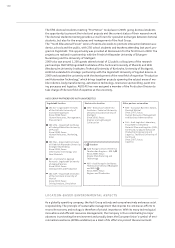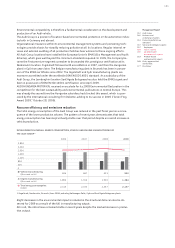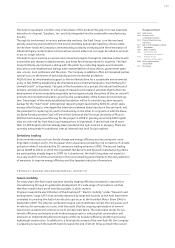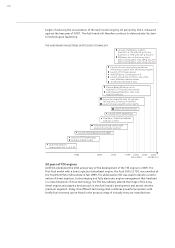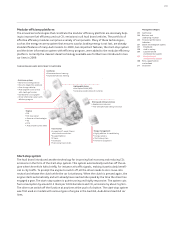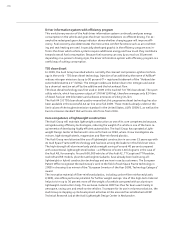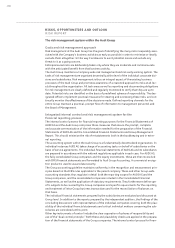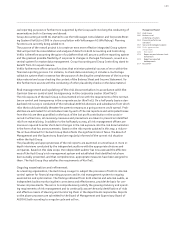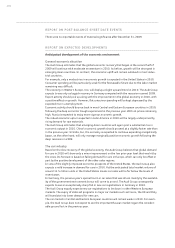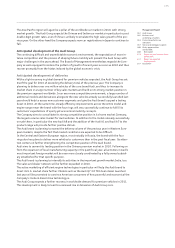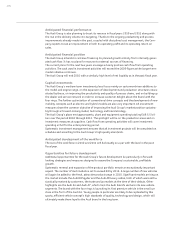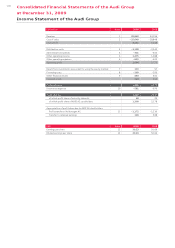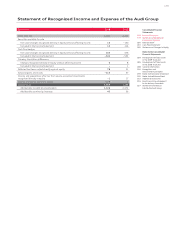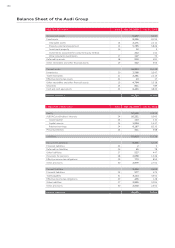Audi 2009 Annual Report Download - page 173
Download and view the complete annual report
Please find page 173 of the 2009 Audi annual report below. You can navigate through the pages in the report by either clicking on the pages listed below, or by using the keyword search tool below to find specific information within the annual report.
170
Individual risks
Within the context of its business activities the Audi Group is confronted with various risk areas,
which are explained in greater detail below. The individual risks described relate to the planning
horizon of 2010 through 2012.
Economic risks
As a globally active company, the Audi Group is dependent to a considerable extent on interna-
tional economic conditions. This is particularly true in respect of the important sales markets of
Europe, the United States, China and Japan. The global recession came to an end in the second
half of 2009. Despite the ensuing slight recovery, the continuing uncertainty in the markets
means that it is not yet possible to assume that the crisis has been finally overcome. Following
the drastic slumps worldwide in demand for cars at the start of last year, an upswing in sales has
been observed recently. However, this effect was substantially attributable to state aid pro-
grams. Now that these subsidy programs have come to an end, a renewed collapse in demand
especially in Western European markets cannot be excluded. Because the premium segment of
international car markets has thus far benefited only marginally from the state subsidies, it
should be less affected by their termination. Considerable uncertainty nevertheless surrounds
the future pattern of demand for premium-segment vehicles, too.
The Audi Group was notably successful at holding its ground in this extremely difficult economic
environment, but the Company was unable to fend off the negative consequences of the crisis
entirely. The unforeseeable future development of international auto markets continues to rep-
resent a high risk to the economic success of the Company. The Audi Group nonetheless believes
it is well equipped to handle these challenges proactively. The Company for instance has a fresh,
attractive product range at its disposal. The Company has in addition implemented extensive,
sustained measures in the past to improve costs and processes, created appropriate provisions
and significantly reduced inventories. Furthermore, the Audi Group continually monitors the
market with the aid of early indicators in order to anticipate fluctuations in sales and be in a
position to respond by adjusting manufacturing output accordingly. The ability to transfer pro-
duction between the various locations under the production turntable principle and the use of
timebanking provides additional flexibility.
The development of international raw materials markets presents a further risk. In order to
secure adequate supplies of production materials while simultaneously minimizing the cost
risks, the Audi Group therefore continually monitors all relevant raw materials markets. Com-
prehensive hedging strategies are moreover implemented. Of particular relevance here is the
development of oil prices. A renewed, permanent increase in the price of oil could lead not just
to higher production and energy costs for the Company but also to rising fuel costs, which would
make customers more reluctant to buy cars. The Audi Group has already taken early action by
making ongoing efficiency improvements across the entire model range. One example of such
action is the Audi A3 1.6 TDI, which very successfully meets customer wishes for highly efficient
vehicle concepts with an average fuel consumption of just 3.8 liters of diesel fuel per 100 kilo-
meters and emissions of 99 g CO2/km over the combined driving cycle.
As a company with worldwide operations, the Audi Group generates a large portion of its reve-
nue in foreign currency. This revenue is exposed to unforeseeable exchange rate fluctuations
that could adversely affect consolidated net profit. In addition to the pound sterling and the
Japanese yen, this includes fluctuation in the euro against the U.S. dollar in particular. The Audi
Group counters these risks by employing appropriate hedging instruments to an economically
reasonable extent and in close, continuous consultation with the Volkswagen Group.
Unforeseeable political intervention in the economy, an escalation in political tension, terrorist
attacks, natural disasters and possible pandemics, all of which could also have a detrimental
effect on the Audi Group’s business performance by undermining economic activity or interna-
tional capital markets, constitute other risk factors. The Audi Group strives to mitigate such risks
to the best of its ability by preparing emergency plans and taking out insurance cover.


